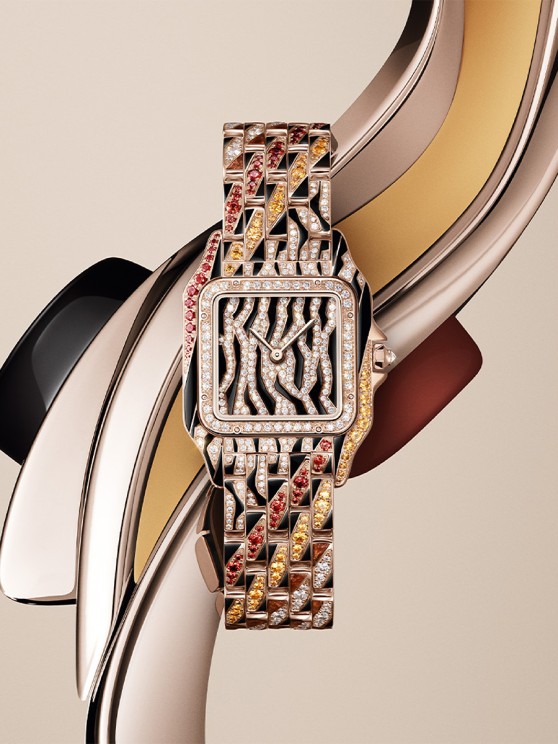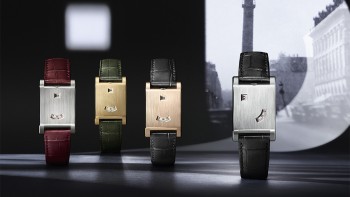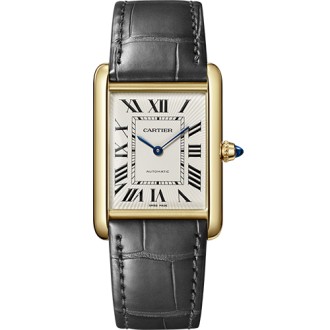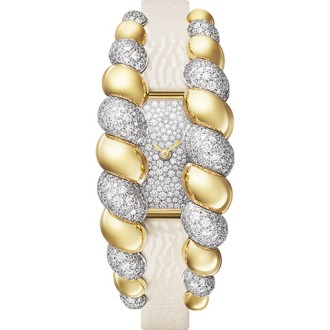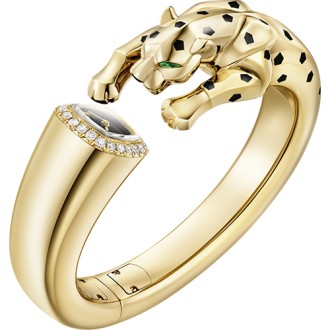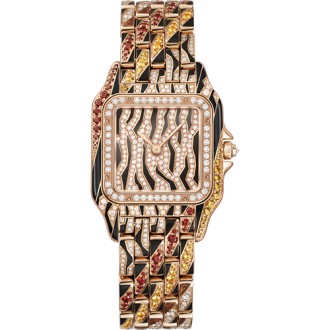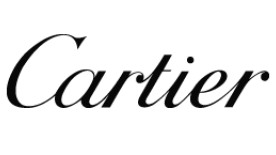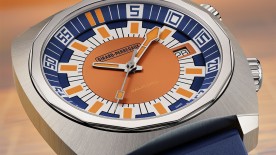The “guichet” is the opening on a dial that typically displays the date. At Cartier, nothing of the sort. There is no dial, no hands. Instead: a square, a semicircle. Absolute minimalism. The Tank returns to a Spartan vocabulary: the Tank à Guichets.
The Tank à Guichets
The first iteration of the Tank à Guichets dates back to 1928. It is a style exercise, one that Cartier has always cherished. In the 1930s, Cartier produced a few unique Tank à Guichets models. In 1997, for the brand’s 150th anniversary, a platinum version was released in 150 pieces. In 2005, the Tank à Guichets aesthetic joined the Cartier Paris Private Collection with 100 pieces in pink gold.
This "Cartier Paris Private Collection," once known as "CPCP," is now simply "Cartier Privé." It occasionally reintroduces the brand’s iconic models in special editions. The new 2025 Tank à Guichets falls under this framework.
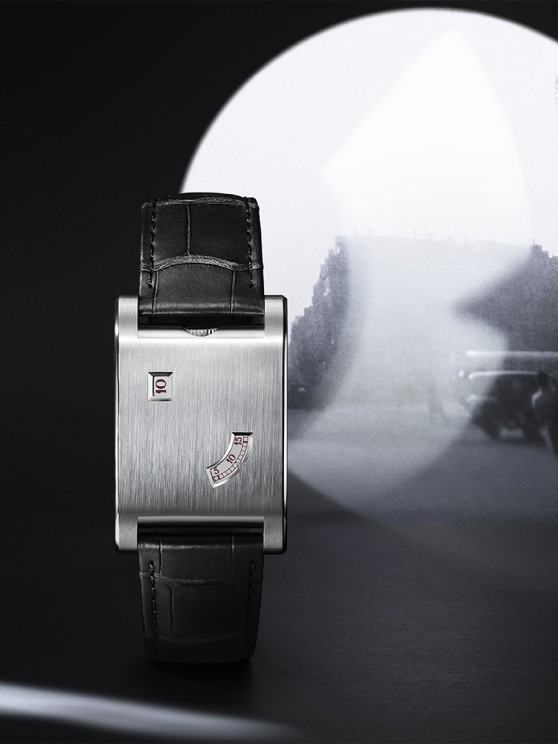
Four versions will share the same movement, the 9755 MC, a manual-wind caliber with jumping hours and trailing minutes, specially developed for this model. The winding crown, just like on the original, is placed at noon—a detail more commonly seen on certain track chronographs or rare dive watches.
Three limited-edition (non-numbered) models feature cases and dials in yellow gold, pink gold, and platinum, with guichets placed at 12 o'clock and 6 o'clock. The numbered version (200 pieces) is in platinum, with guichets placed not along the vertical 12-6 axis, but along the oblique 10-4 axis.
The Tank Louis Cartier Expands
In parallel, a second Tank is introduced, also as a current collection piece. In 1922, Louis Cartier revisited his original 1917 model. He elongated the dial and rounded the lugs. Eventually, both models would coexist, and this revised version would take its name, "Tank Louis Cartier." A century later, the house continues the founder’s work, offering a revised version. The 33.7 x 25.5 mm model is now expanded to 38.1 x 27.75 mm. On the wrist, the railroad track is longer, the Roman numerals breathe more easily, and the blued "sword" hands float with renewed ease. Cartier already offers two variations, in yellow gold or pink gold, powered by the 1899 MC movement created in 2019, which was also used in the Tank Américaine.
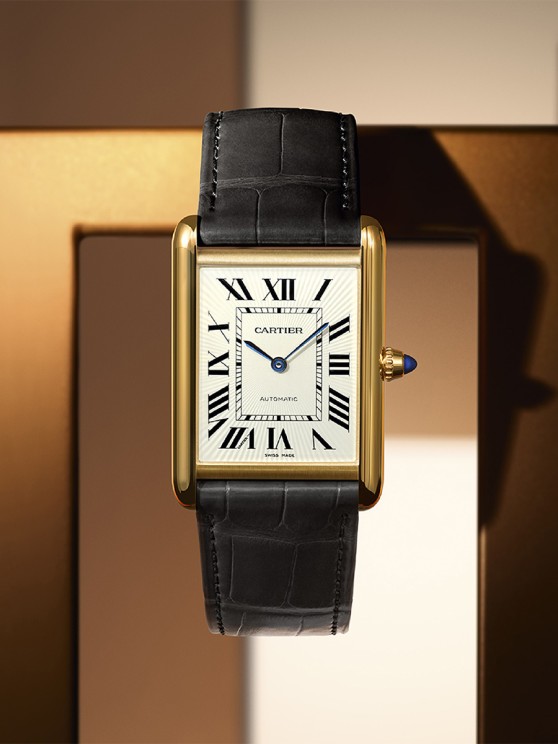
Cartier Tressage
When it comes to jewelry, watchmaking typically limits itself to placing gemstones on its components: a set bezel, a decorated dial, a paved bracelet, or a jeweled crown. Metal and stone coexist, one on top of the other.
Cartier wanted to revisit this model of coexistence. Granted, the limits of physics remain unsurmountable: until further notice, one cannot fuse gold and diamond. Even the adventurers of absolute fusion, from Nyon, have never attempted to melt a diamond.
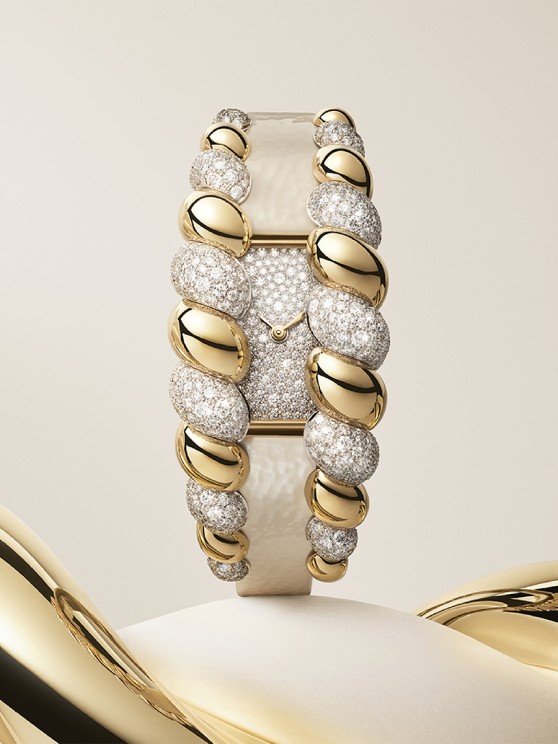
Therefore, Cartier explored an alternative route: weaving. The two materials remain adjacent, yet form a whole—unique, harmonious, coherent. A sculptural watchmaking piece, serving both design and, in this case, the bracelet. Thus, the Tressage Watch was born. Gold and diamonds intertwine in a magnificent double scroll, adorning the bracelet in a timepiece of High Jewelry sculpture.
Double Claw Strike
In parallel, the Panthère makes a comeback. Cartier offers two interpretations. The first is a design exercise: at the ends of a wide gold bracelet, the panther leaps toward a black lacquered dial with a paved bezel. One can admire the tension in the panther's muscle, the fluidity of its lines, and the ingenuity of the design that dresses the bracelet with a contained wildness. The piece is elegant, perfectly executed, and timeless.
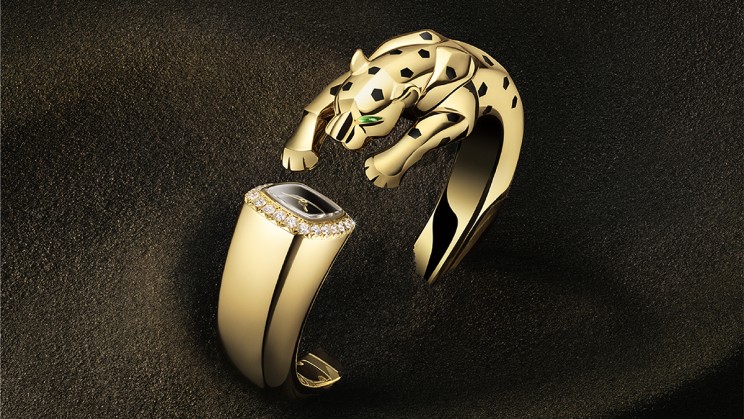
Finally, with the Panthère watch, the piece breaks free from the iconic feline, retaining only its name. These animal-inspired variations of the icon inspire Cartier to create an abstract fur pattern, neither entirely zebra nor entirely tiger. It is a graphic composition featuring black and golden-brown lacquer motifs, diamond paving, and spessartite garnets in orange and yellow. One can note the coexistence of set stones and lacquer. The union may seem natural, but lacquer requires high-temperature baking, distinct from the setting work on gold, whose expansion becomes sensitive when heated. A beautiful exercise in jewelry that Cartier carries out in-house at its Métiers d'Art workshop (MMA for insiders), located a short distance from its manufacture.
